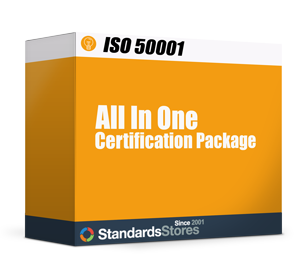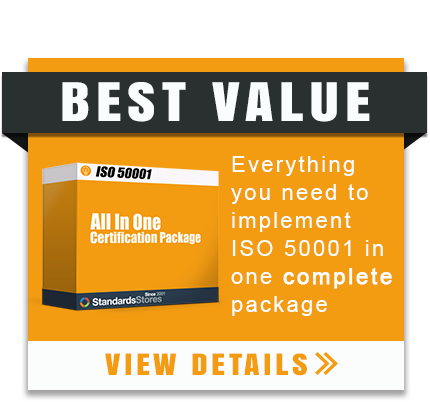Compare ISO 50001:2011 to ISO 50001:2018
The newest version of ISO 50001 was released August of 2018, replacing the 2011 version. You can buy The ISO 50001:2018 Standard here, and you’ll immediately notice the change to the Annex L structure to align with other ISO Management System Standards (MSS)
But there are additional changes and benefits from 2011 to 2018 including:
- Clarification of language and adopting common terms and definitions with other ISO standards
- Prioritizing the role of top management
- Support of integration with strategic management processes
- New definitions, including “energy performance improvement”
- Better defines energy types, and exclusions of thereof.
- Energy review is better defined
- Normalization of energy EnPIs and EnBs
- Additional details on requirements and energy data collection
- Clarification of EnPI and EnB text to provide a better understanding of these concepts
Comparing ISO 50001:2011 to ISO 50001:2018
The comparison chart below will help you identify the specific changes from 2011 to the current 2018 version.
General topic comparison between ISO 50001:2011 and ISO 50001:2018
| ISO 50001:2011 | ISO 50001:2018 | |
| Structure | Four clauses | Ten clauses; reorganization of clause order and content to better align with other standards. |
| Context of the organization | No requirement | An organization must determine, monitor and review internal and external issues as well as relevant interested parties and their requirements, relevant to the outcomes of its energy management system |
| Needs and Expectations of Interested Parties | No requirement | Use contextual information to identify interested parties relevant to energy performance and the EnMS |
| Strengthened Leadership and top Management Commitment | Brief Expectations | New demands actively engage and demonstrate leadership for the effectiveness of EnMS |
| Risk and Opportunity | Preventative Actions | Organizations are required to take action to address risks. |
| Operation Planning and Control | Basic Requirements |
Add-ons in the requirements: -Must control changes and review consequences of changes -Ensure the control of outsourced significant energy uses -Documented information to be kept to the extent necessary to have confidence that processes have been carried out |
| Monitoring, measurement, analysis and evaluation of energy performance and the EnMS | Brief Requirements |
-Determine methods for monitoring, measurement, and analysis and evaluation -Requirements for documented information |
Clause by Clause Comparison
| ISO 50001:2011 | Clause | Clause | ISO 50001:2018 |
| Introduction | Introduction | ||
| Scope | 1 | 1 | Scope |
| Normative References | 2 | 2 | Normative References |
| Terms and definitions | 3 | 3 | Terms and Definitions |
| 4 | Context of the Organization | ||
| 4.1 | Understanding the Organization | ||
| Energy Management System Requirements | 4 | ||
| General Requirements | 4.1 | 4.3 | Determining the scope of the energy management system |
| 4.4 | Energy Management System | ||
| Management Responsibility | 4.2 | ||
| 4.3 | Determining the Scope of the Energy management System | ||
| Top Management | 4.2.1 | 5 | Leadership and Commitment |
| 5.1 | Organizational Roles, Responsibilities and Authorities | ||
| Management Representative | 4.2.2 | 7.1 | Resources |
| Energy Policy | 4.3 | 5.2 | Energy Policy |
| Energy Planning | 4.4 | 6 | Planning |
| General | 4.4.1 | 6.1 | Actions to address risk associated with threats and opportunities |
| Legal Requirements and other requirements | 4.4.2 | 4.2 | Understanding the needs and expectations of interested parties |
| Energy Review | 4.4.3 | 6.3 | Energy Review |
| 6.1 | Risk Associated with threats and opportunities | ||
| Energy Baseline | 4.4.4 | 6.5 | Energy Baseline |
| Energy Performance Indicators | 4.4.5 | 6.4 | Energy Performance Indicators |
| Energy objectives, energy targets and energy management action plans | 4.4.6 | 6.2 | Objectives, energy targets and planning to achieve them |
| Implementation and Operation | 4.5 | 7 | Support |
| 8 | Operations | ||
| General | 4.5.1 | ||
| Competence, training and awareness | 4.5.2 | 7.2 | Competence |
| 7.3 | Awareness | ||
| Communication | 4.5.3 | 7.4 | Communications |
| 7.4.1 | General | ||
| 7.4.2 | Internal communication | ||
| 7.4.3 | external communication | ||
| Documentation | 4.5.4 | 7.5 | Documented Information |
| 7.5.1 | General | ||
| 7.5.2 | Creating and Updating | ||
| 7.5.3 | Control of Documented Information | ||
| Operational Control | 4.5.5 | 8.1 | Operations Planning and Control |
| Emergency Preparedness and Response | 4.5.6 | 8.2 | Design |
| Procurement of energy services, products, equipment and energy | 4.5.7 | 8.3 | Procurement |
| Checking | 4.6 | 9 | Performance Evaluation |
| Monitoring and Measurement | 4.6.1 | 9.1 | Monitoring, measurement, analysis and evaluation of energy performance and the EnMS |
| 6.6 | Planning for collection of energy data | ||
| Evaluation of Compliance | 4.6.2 | 9.12 | Evaluation of legal and other requirements |
| Internal Audit of the EnMS | 4.6.3 | 9.2 | Internal EnMS audit |
| Nonconformities, correction, corrective action and preventive action | 4.6.4 | 10.1 | Nonconformity and Corrective Action |
| Control of records | 4.6.5 | 7.5 | Documented Information |
| Management Review | 4.7 | 9.3 | Management Review |
| 10 | Improvement | ||
| 10.2 | Continual Improvement |



